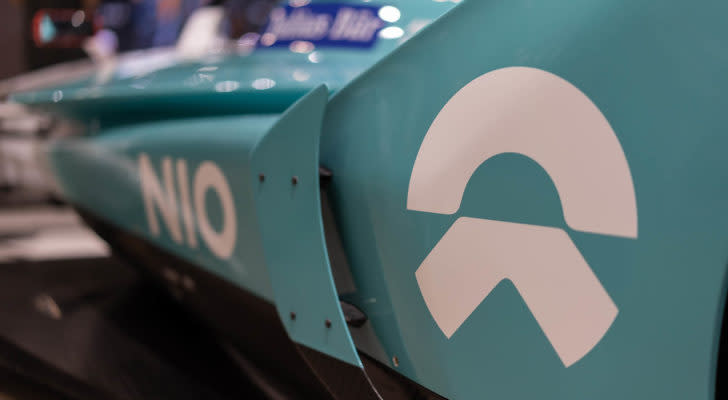Should Investors Include Nio Stock in their Back-to-School Shopping?
Over the past year, Nio (NYSE:NIO) has become a closely followed stock among China’s expanding luxury automotive shares. NIO stock went public in the U.S. as an American Depositary Receipt (ADR) in September 2018. At the time, it was touted as the Tesla (NASDAQ:TSLA) of China.
Source: Shutterstock
Actual fundamental comparison of the two car makers is not the focus of the article today. Yet, our readers may already know that the share prices of both companies have suffered a similar downtrend in 2019. Year-to-date, Nio, like Tesla, has not rewarded its shareholders and the stock is more that 45%. With the decline in price, many analysts have also become increasing concerned about Nio’s prospects.
Let’s look at Nio stock’s fundamentals so that long-term investors may make an informed decision as to whether August may offer a good entry point into NIO shares, which are currently trading around $3.30.
InvestorPlace - Stock Market News, Stock Advice & Trading Tips
How Nio Stock Makes Money
The Shanghai, China-based company develops, manufactures, and sells premium semi-autonomous electric vehicles (EVs) to luxury buyers in China. Nio is a young company that was founded in 2014. It currently has offices in China as well as the U.S., the U.K. and Germany.
The initial backers of Nio included Baidu (NASDAQ:BIDU), Tencent (OTCMKTS:TCEHY) as well as Singapore’s sovereign wealth fund, Temasek Holdings.
The group first focused on research and development (R&D) activities. Then it went into mass manufacturing in March 2017. Its first volume-manufactured seven-seater SUV vehicle — the ES8 — was first sold in China in June 2018, with buyers comparing it to Tesla’s Model X.
At present, Nio sells exclusively in China. In addition to the ES8, the company has two other vehicles: the EP9 (two-seater sports car) and the ES6 (five-passenger SUV).
Nio cars are equipped with a standalone artificial intelligence (AI) system called the NOMI. The company also offers various car charging and power solutions.
Management has been working hard to make the Nio brand more than a car manufacturer, but rather a life-style concept. For example, its showrooms also feature members-only areas, Nio Houses, that serve as upscale social clubs. Nio aims to appeal to the changing demographics of the Chinese car buyers who are more tech-savvy and want more from the dealership experience.
In addition, the group uses social media to actively engage with current and prospective customers. It also has an app with over 800,000 users as well as a virtual currency.
Nio Q1 Results were far from Impressive
Nio failed to impress Wall Street when the company reported first-quarter 2019 results on May 28. The manufacturer’s Q1 sales of $228.8 million halved from the Q4, slipping 54.6% sequentially. Its gross margin was -13.4%, compared with 0.4% in Q4 2018.
Management’s May 2019 monthly delivery update early last month also drove home the concerns for what the team called “the challenging macroeconomic and Chinese auto market backdrop.”
Source: McKinsey & Company
Furthermore, Nio has recently had to recall 5,000 ES8 SUVs due to battery fires.
And the group’s near $600 million quarterly cash burn is not likely to decrease in the next quarter. The issue of cash is one of the most important questions haunting Nio’s fundamental story. Many investors may also regard Nio stock’s debt-to-equity ratio of about 3.7 as rather high.
Although the car company is going through cash at an alarming rate, Nio posted a smaller-than-expected Q1 loss. Its net loss stood at $373 million versus what analysts had expected to be $472 million.
On a final note that may excite investors, the ES6, which in effect is a smaller and cheaper version of the ES8, has begun delivery several weeks ago. Could this new vehicle also provide a much-needed sales spark for Nio in the coming months?
Bottom Line on Nio Stock
On Sept. 12, 2018, Nio stock went public at an opening price of $6. After reaching an all-time high of $13.80 within two days of its listing, the Nio stock price has been on the decline.
I am in the camp that Nio stock’s price weakness since the IPO is a clear reflection of investor sentiment and major fundamental worries, especially regarding a young company with unproven management completing a rather premature exchange listing in a third country, i.e., the U.S., where it sells no cars.
However, I do not expect that the major investors, such as Tencent, as well as the Chinese government will allow the company to go bust.
Daily volatility of Nio stock is high. Any headline news regarding the U.S.-China trade wars as well as sales or other fundamental metrics from Tesla will likely affect the short-term price in Nio shares, too. (Yesterday’s 5.5% drop is a good case in point …)
In other words what is good for China or Tesla may also be good for Nio and vice versa.
Potential investors may want to wait for the release of Nio’s next quarterly results, expected at the end of August. As well, those who buy into Nio shares should be ready to hold them for several years.
Current NIO investors may consider hedging their stock purchases with, for example, Nov. 15 ATM covered calls.
Investors who are interested in buying into Chinese or clean energy companies, but do not want to commit all their capital to a single stock such as Nio may also consider investing in various exchange-traded funds (ETFs) with NIO as a holding, including iShares MSCI China ETF (NASDAQ:MCHI), Global X MSCI China Consumer Discretionary ETF (NYSEARCA:CHIQ) or Invesco WilderHill Clean Energy ETF (NYSEARCA:PBW).
As of this writing, the author did not hold a position in any of the aforementioned securities.
More From InvestorPlace
The post Should Investors Include Nio Stock in their Back-to-School Shopping? appeared first on InvestorPlace.


